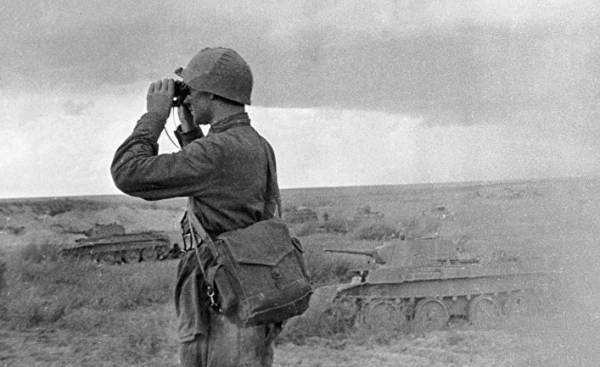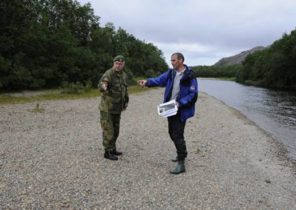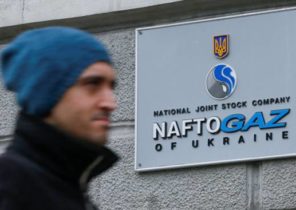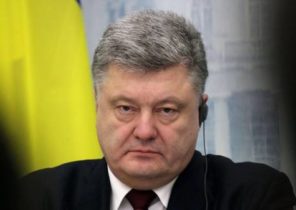
Tactically, this battle demonstrated the shortcomings of the army with a predominance of infantry in combat against mechanized forces in open terrain. It also destroyed the soothing myth that fighting spirit is stronger than firepower (although the reverse is not always true, what convinced us troops in Vietnam). “The doctrine operated only when there were too few Japanese tanks and artillery, and they could not have a decisive influence on the outcome of the battle, writes Edward DRI (Edward Drea). — Why Japanese infantry armed with Molotov cocktails, were forced to meet the counter-attack of Soviet tanks and infantry which acted in support of artillery”.
Despite all his bluster, Japan learned the lesson and never forget it. However, the tactical lessons will be forgotten in five years, and the Japanese soldiers will again have to turn into anti-tank mines in a desperate attempt to defeat American tanks “Sherman”.
But the history is much more important consequence was something that did not happen. In the summer of 1941, when it seemed that the Soviet Union is about to collapse under the pressure of the Nazi blitzkrieg, Japan had a choice. She was able to strike North and seize Siberia since the bulk of the red army fought in Europe. Or she could strike a blow in the southern direction, in the resource-rich Pacific colonies of British, Dutch and Americans.
This is the story of the battle, which was about the war, which was not.
In the period from 1938 to 1939 between the Soviet Union and the Japanese Empire have been several clashes on the border between Japanese-occupied Manchuria, the Russians controlled Mongolia and the far Eastern border of Russia, near the vitally important Pacific port of Vladivostok.
The reward could be rich resources of Manchuria, and in addition, the winner would become the dominant power in northeast Asia. But even more important was the final result of the battles in Manchuria, culminating in pearl Harbor and the war in the Pacific between Japan and the United States.
It is hard to believe that it all started with a few minor hills and a piece of steppe. But conflicts between the two parties has happened before. In the Russo-Japanese war of 1904-1905 a new Empire, to which the Royal army was treated with contempt, believing the Japanese to be inferior Orientals, sank the Russian fleet, defeated the Russian army and captured the strategically important city of Port Arthur with a convenient Harbor (which the Russians before that almost took from China). When in Russia there was a Civil war, Japan sent its troops numbering 70 thousand people to help fighting with the Communists, the White army. Troops of the Japanese Empire was annexed Siberia, but were then forced to leave.
Relations between the two countries were not the best, especially at the peak of militaristic fervor of the 1930-ies. Japan were inclined towards fascism, and Stalin built up the industrial and military power of the Soviet Union, preparing for the inevitable showdown with capitalism. I must say that the Russo-Japanese conflict was in some ways a battle of mirror images. Since the die had for Stalin and the Emperor of Russia and Japan did not care how many people will lose their lives on the battlefield.
The wick lit in the early 1930-ies, when aggressive Kwantung army of Japan in 1931, on his own initiative occupied Chinese Manchuria. The result was the disputed boundary between Japan and Russia of about five thousand kilometers.
The first serious clashes occurred in July 1938 (the Russians call them the fighting at lake Khasan, the Japanese incident at the height of Orangutan), when the Japanese division attacked Soviet troops on the disputed hill near Vladivostok. After the offensive and counter-offensive, which side lost more than four thousand people, the Japanese withdrew.
Khasan battles demonstrated the strengths and weaknesses of both armies. Tips superior Japanese firepower, and they had a lot more tanks. But as a result of Stalin’s purges the Red army lost significant parts of its command structure, have become cumbersome and the morale of it weakened. Not having tanks and artillery in the quantities in which they were more developed in the industrial plan of the Soviet Union, the Japanese made a bet on fighting spirit, willpower and a willingness to win at any cost. At first it seemed that the Japanese were in an advantageous position. The councils originally involved in the battles of the 350 tanks, but nearly 100 cars were destroyed or damaged as a result of actions of the Japanese anti-tank groups. In one case, the Japanese went into a bayonet charge and defeated the defending Soviet troops, therefore in the Imperial army, have any confidence that the determined soldiers able to defeat the machine.
Since none of the parties would not enter into a protracted war, they agreed to a cease-fire. It’s been almost a year and started a real test of strength. In may 1939, clash of puppets, when a few cavalrymen from the Mongol army penetrated into the disputed territory near the village of Nomon Khan (Russians call it the fighting on the Halkin-Gol), but were rebuffed by the cavalry of Manchukuo. When the Mongol cavalry returned, the Kwantung army decided to teach them a lesson by sending in the battle, the 23rd infantry division, supported by 70 tanks.
Tips in response has conducted an offensive force of 500 tanks and armored vehicles. It was a powerful force, but she acted without infantry support. “Operating without infantry support Soviet tanks and armored cars went ahead and actually ripped off a Japanese offensive, writes Edward DRI American monographs about participating in those battles the Japanese troops. — Japanese troops with Molotov cocktails and a 37-millimeter anti-tank guns and anti-tank mines killed at least 120 Soviet tanks and armored vehicles”.
The front line stabilized, and the fighting subsided. The parties were limited to patrolling and raids, but unfortunately for the Japanese, to the front there has arrived the new Soviet commander Georgy Zhukov, who later became a sworn enemy of Hitler’s armies. Zhukov launched a mechanized blitzkrieg, entering into battle infantry, tanks and artillery that encircled and destroyed the 23rd division until the armistice. The loss of the Japanese army amounted to 17 thousand killed, and the Soviets lost 10 thousand people.
Tactically, this battle demonstrated the shortcomings of the army with a predominance of infantry in combat against mechanized forces in open terrain. It also destroyed the soothing myth that fighting spirit is stronger than firepower (although the reverse is not always true, what convinced us troops in Vietnam). “The doctrine operated only when there were too few Japanese tanks and artillery, and they could not have a decisive influence on the outcome of the battle, writes Edward DRI (Edward Drea). — Why Japanese infantry armed with Molotov cocktails, were forced to meet the counter-attack of Soviet tanks and infantry which acted in support of artillery”.
Despite all his bluster, Japan learned the lesson and never forget it. However, the tactical lessons will be forgotten in five years, and the Japanese soldiers will again have to turn into anti-tank mines in a desperate attempt to defeat American tanks “Sherman”.
But the history is much more important consequence was something that did not happen. In the summer of 1941, when it seemed that the Soviet Union is about to collapse under the pressure of the Nazi blitzkrieg, Japan had a choice. She was able to strike North and seize Siberia since the bulk of the red army fought in Europe. Or she could strike a blow in the southern direction, in the resource-rich Pacific colonies of British, Dutch and Americans.
“If successful, the Japanese restricted Japanese-Soviet war in the far East could change the balance of power in the European part of Russia in favor of Nazi Germany,” said Dre of The National Interest.
There were many reasons why Japan decided to fight in the South. Among them the American oil embargo and the helplessness of the Pacific colonies of Europe, because their mother country was occupied by the Nazis. But another reason why the Japanese refused to attack in the North, were the memories of what happened at Khalkin-Gol.
Stalin had the opportunity to throw the elite Siberian troops from the Far East to Europe, where those in December 1941, pushed the German tanks from the gates of Moscow. But Japan chose to fight in the Pacific, the war with America, which doomed the Empire to destruction.
Michael peck, often writing for The National Interest, lives in Oregon and specializiruetsya on defense and history. His work appears regularly in Foreign Policy, War Is Boring, and many other publications.







